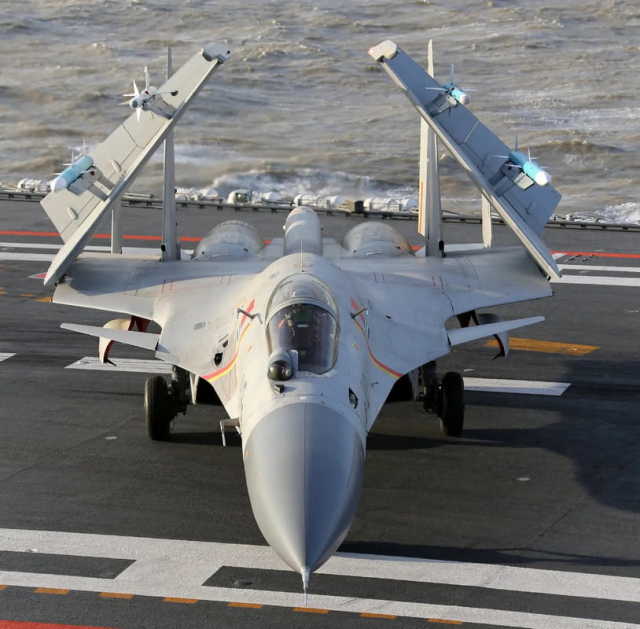With this publication, we conclude the review of Chinese air-to-air missiles, or AAM [air-to-air missiles] from Thomas Newdick. Part IPL-11
As China's next air-to-air missile, the PL-11 actually goes back much further, to Beijing's first attempts to create a medium-range weapon with semi-active radar homing (SARH) combined with inertial guidance. This guidance method requires the carrier aircraft to illuminate the target with its own radar during the final stages of the attack.
It seems that initially these developments focused on an attempt to redesign the AIM-7 Sparrow, which turned out to be unsuccessful.
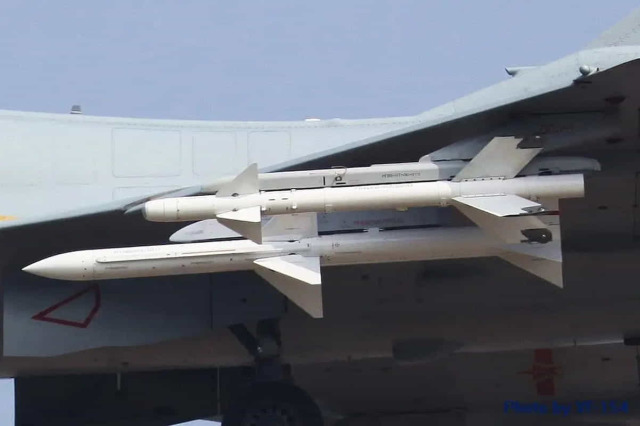
PL-12 (inside) and PL-8 on the outer pylon of the external suspension under the wing of the early J-10.However, in the mid-1980s, China acquired the Alenia Aspide Mk 1 surface-to-air missile from Italy, which is essentially an analog of the AIM-7E.
After obtaining a license to produce the Aspide Mk 1 land-based, China then began developing this AAM, known as the PL-11. Despite the massive repression in Tiananmen Square, which led to the abrupt termination of cooperation with Italy (and with the United States), development continued, and in 1992, test firing of a missile from a J-8B Finback fighter began.
Like the Aspide Mk 1, and unlike the AIM-7E, the PL-11 has a reverse monopulse homing head, which should make it more accurate and less susceptible to electronic countermeasures.
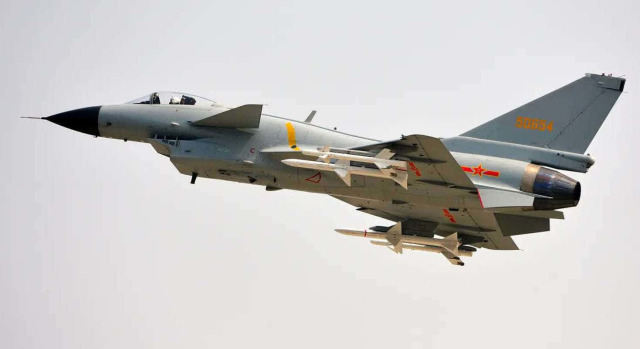
J-10A armed with PL-11 (inside) and PL-8 (outside)The commissioning of the PL-11 took place in the mid-1990s, but it seems that the full operation of the weapon was allowed only around 2001.
By this time it was declared obsolete.
PL-12
PL-11 was produced only for J-8 and J-10 aircraft. Since the early 1990s, work has been underway on its planned successor, the PL-12, which was conceived as a Chinese response to the AIM-120 AMRAAM.
Like AMRAAM, the PL-12, the development of which started in the early 1990s, has an active radar GPS that provides the "shot - forgot" principle, as well as a data transmission channel for updating data in the middle of the course. The missile is based on a miniature active radar GPS plus a data link, which some sources suggest was developed with the assistance of Russia.
The PL-12 as a whole is slightly larger than the AMRAAM, and its tail control stabilizers have distinctive cutouts. According to reports, the PL-12 uses a variable thrust rocket engine to provide speed and maneuverability throughout the flight. The PLA believes that the missile is superior to the AIM-120B and the Russian R-77 (AA-12 Adder), although it is slightly inferior in power to the more advanced AIM-120C.
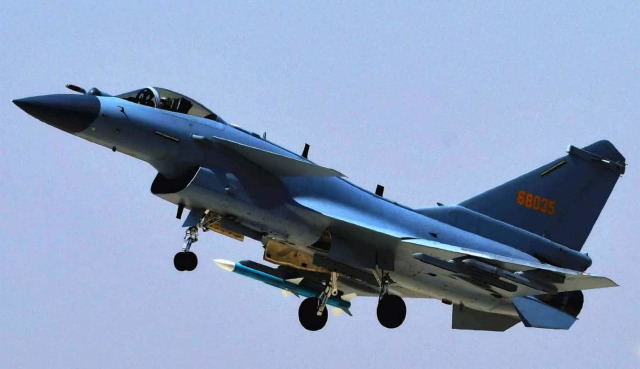
J-10C PLA performs a training flight with one inert PL-12 under the right wingThe PL-12 was adopted in 2005 and was first transferred to the J-8F units, and then introduced on the J-10, J-11B, J-15, J-16, Su-30MK2 and J‑20.
The missile is also offered for export under the designation SD-10. It is used on JF-17 Thunder fighters operated by Myanmar, Nigeria and Pakistan.
It is reported that the improved version of the PL-12A is equipped with a modified GOS with a new digital processor and is allegedly comparable to the AIM-120C-4. According to unconfirmed reports, the new version may also have a passive guidance mode for jammers, electronic warfare emitters and early warning aircraft.
According to official specifications, the range of the PL-12 ranges from 44 to 62 miles. The indicator has been reduced to 37-44 miles for the SD-10 export configuration. According to RUSI, the range of the PL-12 "is somewhere between AIM-120B and AIM-120C-5".
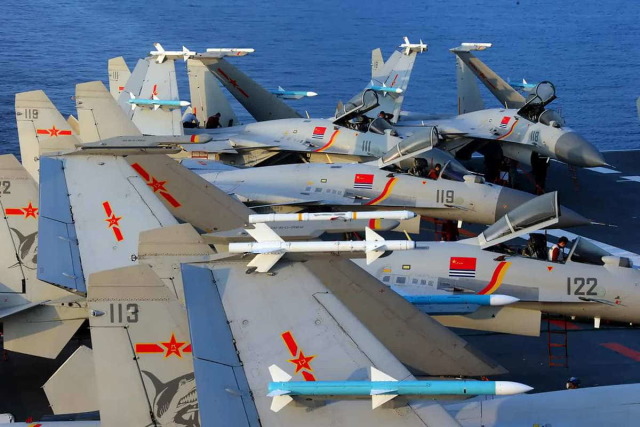
Fighters of the aircraft carrier J-15 on the deck of the aircraft carrier LiaoningThere were rumors about other, more advanced variants, including one with folding ribs for internal mounting, one with an anti-radiation GOS and a version with a ramjet engine for long-range combat.
None of them, apparently, went into operational operation. Interestingly, the Pentagon's latest report to Congress on Chinese military developments over the past [2021] year states that China is "developing a RAMJET in addition to the PL-15, which is out of sight," although there does not seem to be any broader evidence of this.
PL-15
While the exotic versions of the PL-12 did not enter service, China was already busy developing a new active air-to-air missile with radar guidance PL-15. The latter, apparently, had to at least meet the characteristics of the AIM-120D. From the very beginning, this missile has been adapted for internal placement, initially in the J-20, and has characteristic shortened stabilizers to reduce its dimensions.
Even more importantly, the new rocket uses a two-pulse rocket engine, which helps to increase its range to the claimed 124 miles. The two-way data link provides an update of the missile guidance and the launching aircraft, and the homing system uses AESA (active electronic scanner array) scanning technology with active and passive modes, and is also said to have better resistance to countermeasures.
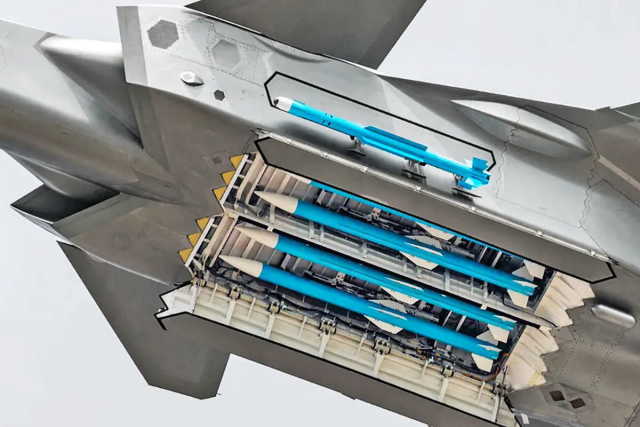
Close-up of a J-20 fighter with four inert PL-15s in the main ventral compartmentsDevelopment of the PL-15 began around 2011.
The following year, she was spotted on board the J-11B as a test product. Since 2013, these air-to-air missiles began to appear in the main weapons compartment of the J-20 even before the official introduction of the model into operation. It is believed that the operation of the PL-15 began at the end of 2016, and the new missile was initially put into service with the J-10C and J-16. It was also noticed on the J-11B, which suggests that these aircraft are being modified to ensure compatibility. In the future, the deck J-15 will also be a likely recipient.
Currently, the PL-15 replaces the PL-12 in the PLA fighter fleet, and is also offered for export under the designation PL-15E. The first customer of the export model was Pakistan, which put this missile into service with its JF-17 Block III and J-10C fighters.
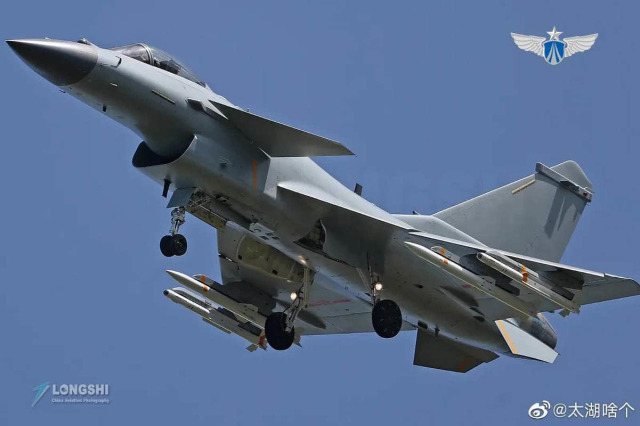
The latest J-10 package (like this J-10C) includes PL-15 (inside) and PL-10 (outside)The published TTX PL-15E includes a firing range of up to 90 miles, which is slightly less than the domestic version and may be the result of using a different fuel or changes in the engine.
Despite this, RUSI determines that the PL-15 "exceeds the range of the American AIM-120C/D AMRAAM series and has a maximum range comparable to Meteor." However, the same source notes that the European Meteor probably has a much larger impact zone and a better chance of hitting at long ranges, thanks to a ramjet engine. At least partly in response to the PL-15, the US has embarked on a program to improve its AIM-120D, creating a temporary weapon before the new long-range AIM-260 enters service. The AIM-260 program itself has also largely become a response to the Chinese development of air-to-air missiles.
PL-XX (PL-17 or PL-20?)
While the PL-15 is widely regarded as the successor to the PL-12, another air-to-air missile program is currently being developed, although details about it remain limited.
Known in the West as PL-XX, it is believed that this AAM is very long-range, possibly designed primarily to defeat expensive objects such as tankers and early warning aircraft. Alternative designations may be PL-17 or PL-20, but they remain unconfirmed.
It seems likely that the project has supplanted plans to create a ramjet version of the PL-12 or a competing PL-21, also with a ramjet engine. Instead, the new weapon chose a two-pulse rocket engine, which should facilitate the development in technological terms.
The resulting rocket is significantly longer and wider than the PL-15. The length is almost 20 feet [6.1 m]. For maneuvering, the rocket uses a combination of four small tailfins and thrust vector controls and is reported to have a range of over 186 miles [almost 300 km] at a maximum speed of at least Mach 4. It is assumed that the guidance is carried out due to a combination of a two-way data transmission line and the AESA homing system, which is said to be highly resistant to electronic countermeasures. Given such long distances, it can be expected that most combat operations will involve guidance data provided by means of support, such as friendly early warning aircraft, other aircraft closer to the target, ground radars or even satellites.
Very long-range air-to-air missile PL-XX. First seen under the wings of a J-16 multirole fighterA possible optical window on the side of the nose of the missile may indicate an additional infrared GPS, which will significantly complicate its defeat, since it will be immune to strong interference in the final phase of the attack.
This is an established configuration, so it would not be surprising if it would be adopted for such a large AAM concept.
The size of the PL-XX means that, at least for now, it is limited to external transportation. For the first time, the weapon was identified on board the J-16, from which it successfully launched for the first time in November 2016. The AAM may well be compatible with other Flanker [Su-37] series fighters and could potentially be placed on the external suspension of a J-20 fighter. Nevertheless, the current status of the missile is somewhat unclear: tests, apparently, have been going on since 2020, but there is no confirmation of the official entry of the model into service yet.
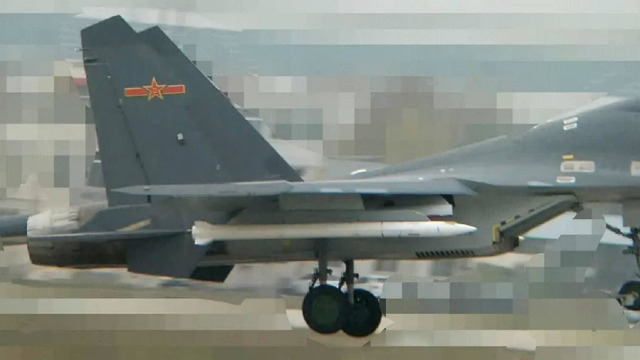
Details of the PL-XX rocketIn general, China has made rapid progress in the development of air-to-air missiles, simultaneously improving its fleet of combat aircraft and, in some cases, offering capabilities that do not fully correspond to comparable Western or Russian products.
According to most sources, its latest air-to-air weapons have allowed China to approach parity with its Western counterparts, even exceeding parity in some areas, while significantly surpassing Russian missiles. On the other hand, the testing regime and development infrastructure available in the West are still likely to provide certain advantages in terms of the actual effectiveness of AAM. The same can be said about the network infrastructure, which increases the flexibility and capabilities of next-generation "networked" missiles - at least for now. At the same time, it is almost certain that several new programs are also being developed in China, although it is not easy to separate rumors from reality in this regard. The country also continues to invest in expanded testing and development infrastructure, which is increasingly comparable to the Western one.
China is also introducing AAM along with additional sensors, including AESA radar, low-visibility technologies, as well as modern cabins with helmet-mounted displays, following logical progress in terms of steadily improving performance and capabilities. As a result, China has essentially overtaken Russia as the leading aerial threat that the US and many of its allies are likely to have to contend with in the coming decades.
According to the materials of the resource thedrive.com/the-war-zoneThe materials of the article contain exclusively the author's estimates and do not reflect the position of the editorial board of IVi.
